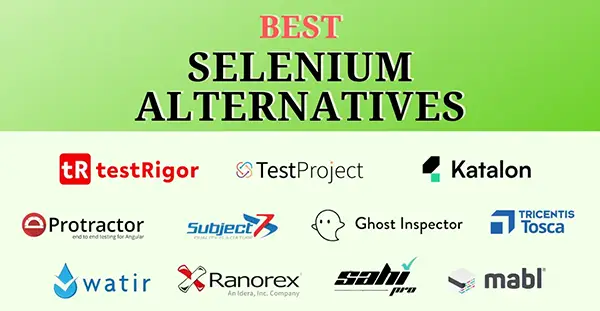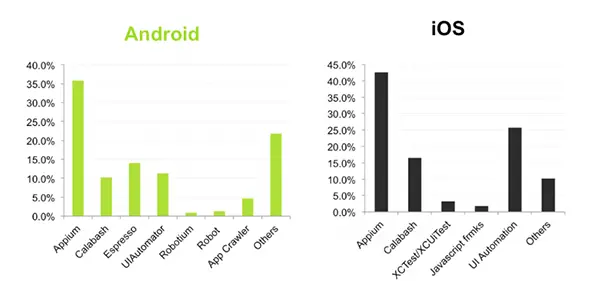With the advent of automation technologies, the field of software testing has seen a tremendous transition, and Selenium has been a key component of this development.
Selenium was regarded as a standard for DevOps teams and was the de-facto framework for test automation for a moment.
Because it enables test engineers to create test scripts in their native programming language, it was the recommended experimenting tool.
As the field of software development keeps developing, quality control and experimentation are now necessary steps in the process.
An open-source program called Selenium has been widely used for automated testing. However, because of its complexity and coding requirements, Selenium might be difficult for non-technical testers.
Thankfully, non-technical testers can choose from more user-friendly choices. In this article, we will be looking at which Selenium Alternatives are ideal for them.
For many years, Selenium has been the preferred tool for software examiners due to its widespread use as an open-source testing framework.
It can be very difficult for examiners to use, though, as it demands a certain level of technical understanding.
The requirement for programming knowledge is one of the primary obstacles to adopting Selenium for non-specific inquirers.
Do You Know?
As of now, the Global Selenium market size is USD 0.354 billion, and shortly it will grow at a CAGR of 9.20% from 2023 to 2030.
Writing automation scripts in languages like Java, Python, or C# is a requirement for Selenium examiners.
For inquirers without programming skills, this might be a major obstacle, which reduces the number of potential enquirers and slows down the testing procedure.
Selenium is still a potent measuring tool that can be very helpful for software experimenting, even with these difficulties.
Nonetheless, it might be worthwhile for non-specific examiners to take into account more user-friendly and accessible substitute technologies.
It’s necessary to list the qualities that make a tool perfect for non-specific users to find appropriate alternatives to Selenium:

Katalon Studio is a flexible trial tool for both technical and untechnical users.:
Integrated test recording and scripting capabilities are among its advantages, along with an intuitive user interface.
The user-friendly architecture of Katalon Studio makes it possible for non-specific testers to develop automated tests easily.
TestSigma serves as a compelling Selenium alternative, boasting a user-friendly automation trial with a streamlined, codeless approach.
With an intuitive interface and powerful capabilities, it enables efficient test creation and execution. TestSigma’s versatility extends to web and mobile applications, ensuring seamless cross-platform trial.
Its adaptability and robust features make it an excellent choice for teams seeking an agile, accessible, and high-performance testing solution.
TestComplete is appropriate for enquirers with a range of technical abilities since it strikes a balance between scripting and scripting-free solutions.
In addition to supporting both desktop and online application trials, the tool’s user-friendly UI makes it suitable for untechnical users.Appium: Appium, which focuses on mobile app tryout, makes mobile application automation easier by giving untechnical testers access to visual experimenting tools.

Statistics:
According to the latest report, On both Android and iOS, Appium and Calabash are cross-platform frameworks. However, they have been popular choices for iOS test automation.
Cross-platform trialing is made possible by its platform-agnostic design, which makes it a useful substitute for those who prioritize mobile testing.
Tricentis Tosca uses a model-based methodology for test automation, which enables them to utilize it.
Testers no longer need to possess in-depth scripting skills to create automated tests by utilizing visual models and low-code scripting choices.
Mabl distinguishes itself with its AI-driven trial features, which greatly automate the procedure.
Because Mabl’s no-code automation eliminates the requirement for coding knowledge, they may develop tests with ease.
For them, TestCraft’s cloud-based platform is a great option because it provides a visual test creation environment.
Interesting Fact:
The top industries that use TestCraft for application development are Software Version Management, SCM, and Source Code Control.
Because of its no-code methodology, testers can create tests using an intuitive interface, which lowers the entrance barrier.
It’s key to take into account aspects like feature set, support and documentation availability, and ease of use when choosing the best alternative to Selenium.
Every tool has benefits and drawbacks.
Therefore, it’s vital to conduct a careful analysis based on individual requirements and preferences.
Ease of use is the first and most decisive factor to consider when choosing a non-technical friendly testing instrument. It should be simple to install, configure, and operate the tool.
It should feature an easy-to-use interface that is straightforward and intuitive. The tool should work without requiring them to create any code or scripts.
It should be simple for them to write and run tests with the tool’s user-friendly features. Testers should be able to develop tests by dragging and dropping components in a visual text editor, for instance.
Moreover, it ought to contain functions like recording and playback, which let them develop tests by capturing and replaying their movements.And lastly, the tool’s price is a determining factor. The tool should be reasonably priced because non-technical testers might not have a lot of money to spend on trial supplies.
Experimenting tools that are affordable and suited for them are widely available.It ought to be able to interface, for instance, with tools for test management, continuous integration, and bug tracking.
This will assist non-technical inquirers in streamlining and improving the effectiveness of their testing procedure.
Finally, non-technical tester-focused Selenium Alternatives provide a way to more approachable and effective test automation.
Untechnical testers can choose tools that best suit their experimenting needs by taking into account features like feature sets and ease of use, as well as the distinctive qualities of each tool.
As the landscape of test automation continues to evolve, these alternatives empower them to contribute effectively to the software testing process.